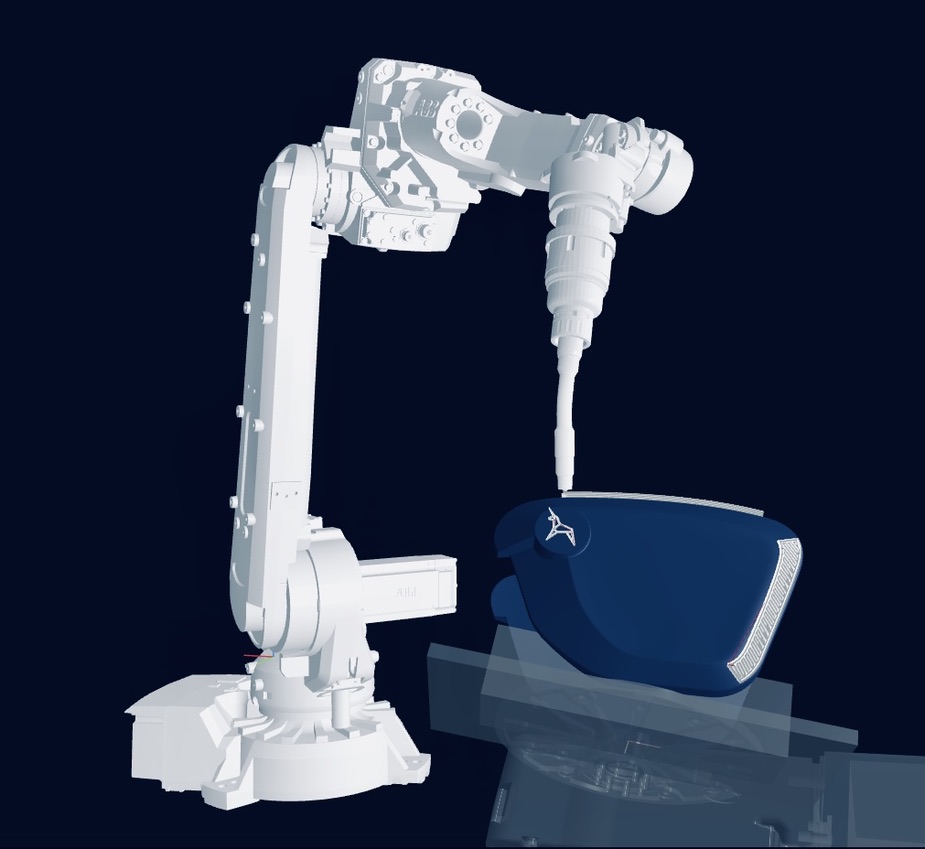Swedish firm Stilride has partnered with 3D printing software startup ADAXIS to help implement its STILFOLD technology, which uses robotic arms to curve and bend steel into functional structures.
Founded in 2019, so far, Stilride has used the technology for its Sport Utility Scooter One (SUS1) vehicle. Through a reduction in manufacturing operations, part count, and molds, the company hopes that it will make more sustainable chassis and other components. Stilfold might be compared to Desktop Metal´s Figur digital stamping technology, which uses pins to stamp out various shapes in sheet metal. Both technologies use highly variable machinery and custom tool paths for a new way of making components.
Neither process is additive, per se, but they are fellow travelers in the digital manufacturing revolution that additive manufacturing (AM) is a part of. Additionally, in this case Stilride has partnered with ADAXIS, which pitches its control software for adapting robotic arms for 3D printing. For Stilride, the ADAXIS software enables the production of more components than it could previously with STILFOLD.
By partnering with ADAXIS, Stilride will allow the firm to manufacture more parts in-house, use less material overall, and may make the SUS1 bike more cost-effective and environmentally friendly. The firm hopes its scooter will go into production in 2023. In an echo of Divergent´s forays into drone and car manufacturing, Stilfold is also being used by Geely/Volvo subsidiary Polestar for some car components.
“We’re excited to be working with fellow Swedish tech innovators ADAXIS to enhance our sustainable manufacturing technology offering. The team at ADAXIS has a huge amount of knowledge and experience in robotics and optimising robotic construction, so it’s great to have them on board to strengthen the capabilities of our tech. Not only will their technology improve the sustainability, speed and cost-efficiency of producing the SUS1, but it will also help us reach our ultimate goal of rolling out a fully distributed production model where the construction of our products can be fully automated, powered by robotics technology,” said STILRIDE CEO Jonas Nvyang.
“Using robotization we can push the limits of what can be manufactured using 3D technology, both in terms of size and shape. The challenge is that programming robots for 3D is significantly more advanced and complex than for normal welding jobs. Our goal is to speed up the manufacturing process and make it more intuitive, even when it comes to really complex projects, so that everyone can benefit from this technology. We’re excited to partner with STILRIDE to supercharge their origami-inspired manufacturing technology with 3D printing capabilities, and enable them to maximise the potential for robotic automation to speed up and simplify the way they manufacture,” said Emil Johansson, CEO of ADAXIS.
Two notable developments are embedded in this story. One is the battle for medium-and large-format control software. Traditional players such as Mastercam and Moduleworks are in competition with Ai Build to define the future of control software for large-format 3D printing. AM at this scale has applications in boat building, formwork, houses, tooling, interiors, molds and much more. It’s a fast growing area with many more applications out there. It has its unique challenges and has so far not been dominated by Materialise like other software segments have been. Ai Build dominates much of the segment at the moment, using software intelligence to optimize toolpaths for 3D printing in metal, polymer and other materials, including cement. Formed in 2021, ADAXIS hopes to challenge this front runner in what is a fast growing market and potentially extremely lucrative market in the long run.
At the same time, we can see another development. With no systems integrators taking firms from knowing nothing all the way to industrial production, the digital manufacturing opportunity remains an elusive one for large businesses. At the moment, either a company makes a competence center and then waits for knowledge to percolate across the organization or they focus a lot of attention on a single project. Either way they’ll have to hire people and on board the technology while implementing some change management to overcome internal barriers. Not an awesome process, trust me.
Divergent has pioneered an alternative path to digital innovation. You can hire the business to make your components. Instant 3D printing sauce without the new hires and investment. In a modern outsourcing-centric approach, many large companies can really get a lot of mileage out of using a digital savvy partner to make components for them.
In the Archipelago series I´ve discussed CAPEX-heavy and -light approaches to 3D printing. This is a similar development where companies will either think 3D printing is strategic and develop all of the competencies in-house or just buy it quickly outside. Both Stilride and Divergent are facilitating the innovation of others by making parts for them, which gives them more scale and scope and improves their economics. We would expect many more firms to leverage their own in-house technologies for partners in the future.

